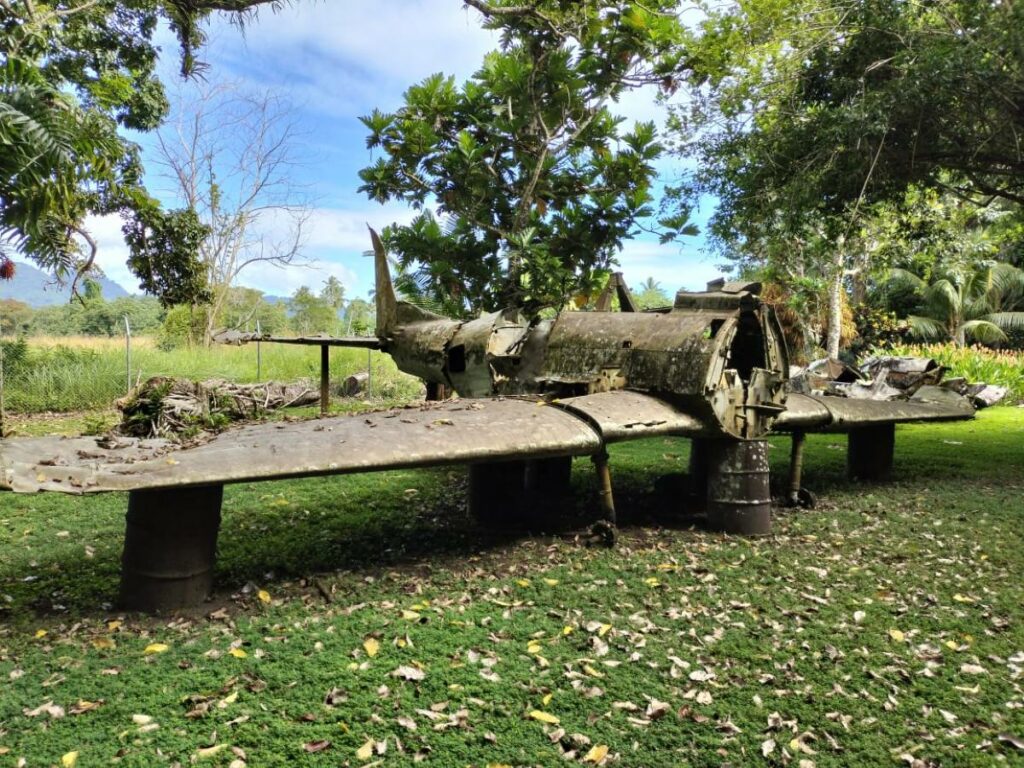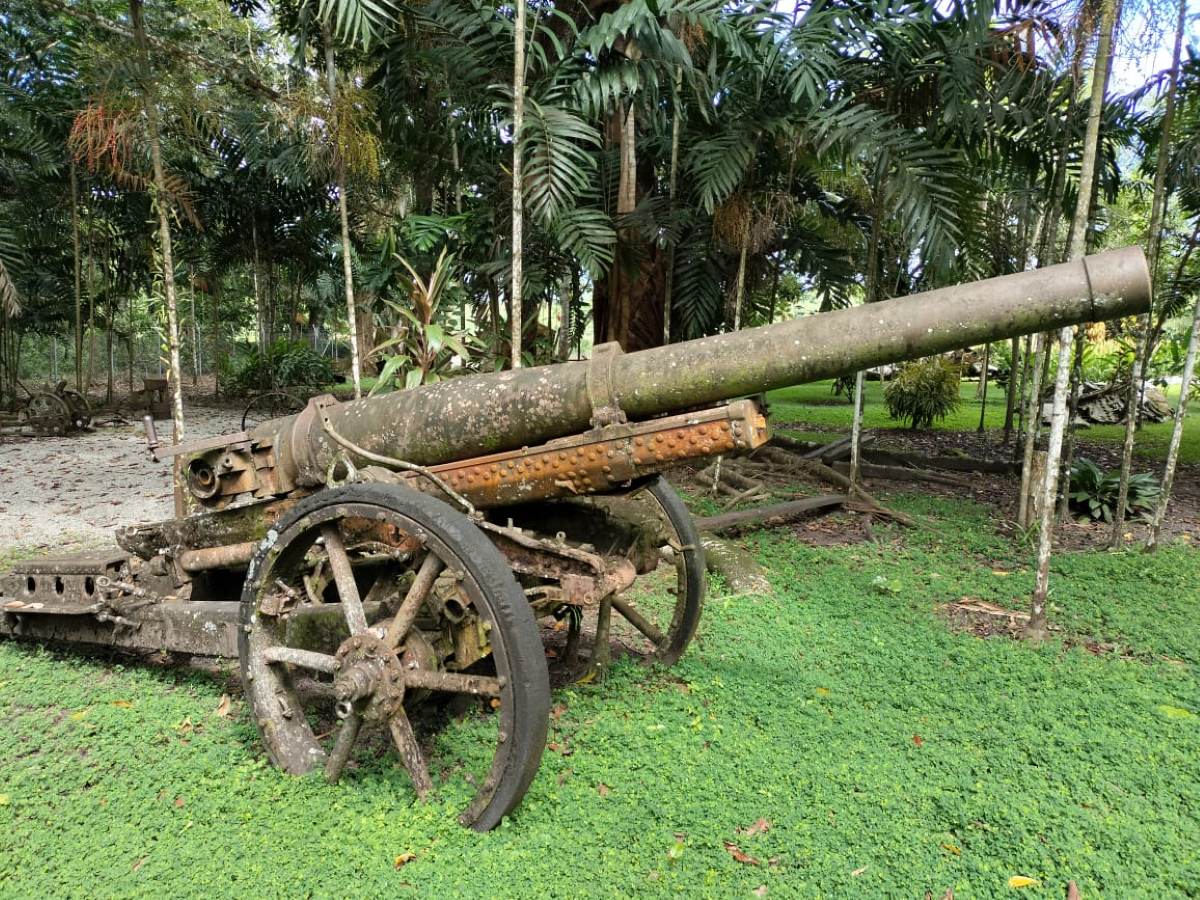The water between Guadalcanal and Tulagi in the Solomon Islands is renowned as a museum of World War II relics.
Known as ‘Iron Bottom Sound’ because of the abundance of wreckage that lies below the surface, it is a memorial to the brutal fighting that took place in this key strategic site.
It is quite literally a graveyard for the many military vehicles – and, of course, thousands of men – who met their end in this Pacific battlefield.
As such, it has become a bucket-list destination for divers who are fascinated by the history which is available for exploration – with Emperor Honiara the perfect place from which to access it.
However, there are two other museums – more traditional land-based versions – which provide an equally fascinating insight to this part of the world and its chequered history.
The Vilu Military Museum, located west of the capital Honiara, is a haunting and evocative open-air memorial to the fierce World War II battles fought on Solomon Islands soil.
Nestled in a clearing surrounded by tropical jungle, the museum’s atmosphere is quiet and reflective, with rusting relics slowly being reclaimed by nature. This peaceful setting contrasts with the violent history it commemorates, creating a moving experience for visitors.
The museum showcases an array of weathered military remains from both Japanese and American forces. Among the most striking exhibits are the skeletal frames of a Japanese Mitsubishi Zero and a US F4U Corsair fighter, along with several anti-aircraft guns, naval guns, and artillery pieces scattered across the site.
Tank parts, bomb casings, and engine wreckage sit among the foliage – serving as stark reminders of the intense Guadalcanal Campaign of 1942-43 – with informative plaques accompanying many displays to help give understanding of the context and significance of each artifact.
Like Iron Bottom Sound itself, Vilu is a place of remembrance with its remote and overgrown setting giving a strangely sombre charm.
The Solomon Islands National Museum is a similarly quiet, yet powerful, tribute to the nation’s rich and diverse cultural heritage.
Tucked away in the heart of Honiara, and though modest in size, the institution plays a massive role in safeguarding the stories, artefacts, and identities of the many island communities that make up this unique Pacific archipelago.
Established in 1969 and overseen by the Ministry of Culture and Tourism, the museum was founded to preserve the traditional knowledge and tangible heritage of the Solomon Islands – especially as the country approached independence in 1978.
Over the years, it has grown into a space that not only protects cultural artefacts but also fosters education, pride, and cross-generational knowledge-sharing.
The museum’s exhibits are a fascinating journey through time and tradition. One of the most striking displays is the collection of traditional canoes and paddles, each with distinctive designs that reflect the artistry and seafaring expertise of different provinces.
These vessels were essential for trade, travel, and cultural exchange across the islands. The collection of shell money – intricately woven strands of polished shells used for ceremonial exchanges, marriage, and compensation – highlights the Solomon Islands’ continuing connection between culture and commerce.
Equally captivating is the museum’s array of wooden carvings, masks, and dance ornaments. These are not just decorative objects; they are visual expressions of identity, spiritual belief, and social structure. From Malaitan war clubs to spirit figures from Isabel and intricately carved ancestral boards from the Western Province, each item reflects a unique island tradition and worldview.
The museum also, of course, offers a compelling look at the Islands’ World War II history, with rusted helmets, spent ammunition, and fragments of downed aircraft recovered from Guadalcanal and beyond.
These items provide sobering insight into the islands’ strategic role during the Pacific theatre of the war and the enduring impact it had on communities.
Beyond its walls, the museum hosts regular performances of traditional music, dance, and storytelling in its outdoor cultural stage. These events are more than entertainment – they are living heritage in motion, drawing younger generations into the rhythms and rituals of their ancestors.
The Solomon Islands National Museum may be small, but it is a national treasure. By honouring the past and embracing the future, it serves as a cultural compass to a nation in preserving its identity and celebrating its diversity.
The Vilu Military Museum is also about remembering. With its US, Japanese, Australian, Fijian and New Zealand memorials, alongside the earie relics, there are hugely visible and emotional ways to pay tribute to the past.
We thoroughly recommend the visits to any guests joining us in the Solomons. There is amazing life and history to see under the water, but there is much to be acknowledged and celebrated above it, too.


